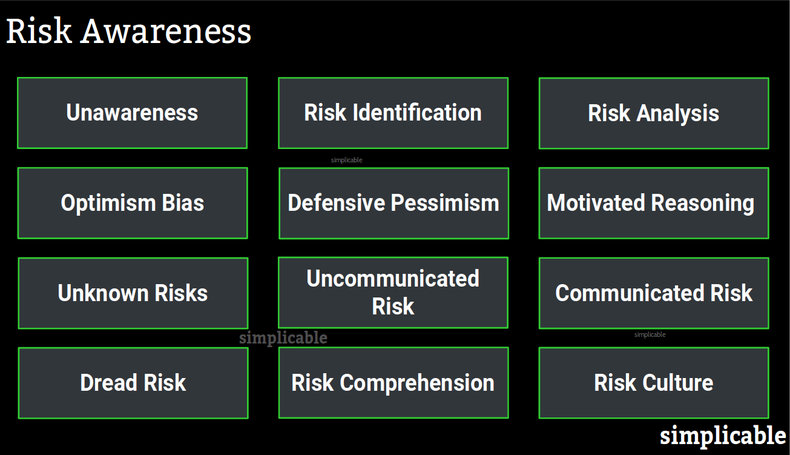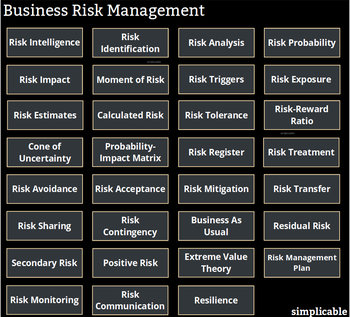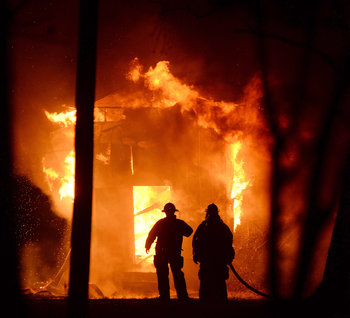

Unawareness
Unawareness of risk such as an individual who purchases a home in an area at high risk for forest fires without any knowledge of this risk.Risk Identification
Performing the due diligence to identify risks such as a home buyer who researches the air quality in an area before purchasing a house.Risk Analysis
Analyzing identified risks including factors such as probability, impact and moment of risk.Optimism Bias
Risk identification and analysis that is performed with an optimism bias. For example, happily assuming that interest rates will go down soon in a financial risk calculation.Defensive Pessimism
Using defensive pessimism to identify risks and conservative estimates of risk probability and impact.Motivated Reasoning
Understating or overstating risks due to motivated reasoning. For example, a project manager who is eager to please an executive so they underestimate the risk a project could be late or overbudget.Unknown Risks
A risk that is missed by risk identification due to optimism bias, motivated reasoning or unknown unknowns.Uncommunicated Risk
A risk that is fully documented somewhere that becomes knowledge waste due to a lack of communication.Communicated Risk
A risk that has been communicated to anyone it can impact.Dread Risk
Dread risk is a class of risk that people find particularly fearsome or emotional. This tends to result in an overestimate of such risks and a desire to minimize such risks whatever the cost. Awareness of dread risks is typically high but they may be surrounded in popular misperceptions.Risk Comprehension
A risk may be communicated without many people actually taking interest or fully understanding the risk. Risk comprehension is the degree to which people actually understand a risk including its probability, impact and treatment. This may require over-communicating a risk using storytelling to make the information consumable. For example, a government that communicates the health risks of smoking for many decades using mass media and education systems.Risk Culture
Risk culture are the norms, expectations and processes that a society, organization or group uses to identify, assess, communicate and manage risk. For example, a manufacturing firm where it is a norm for managers to communicate safety risks on an regular basis such that safety risks and preventative measures are well understood.Notes
Risk takers, who survive, tend to have high awareness of risk as a result of experiencing risk. In some cases, risk takers become adept at identifying, estimating and treating risk. For example, a big wave surfer may be aware of a broad range of risks associated with the sport and methods for reducing such risks.Risk aversion can result in low risk awareness due to a lack of experience with risk. Extremely conservative individuals may rely on high level strategies to avoid risk such as preserving the status quo and seeking safety in large groups. Such individuals may have little knowledge of risk and may use heuristics such as purchasing popular investments based on the idea that it would be unlikely for everyone to be wrong.| Overview: Risk Awareness | ||
Type | ||
Definition | The degree to which risks and risk treatments are understood by a society, organization, group or individual. | |
Related Concepts | ||
































